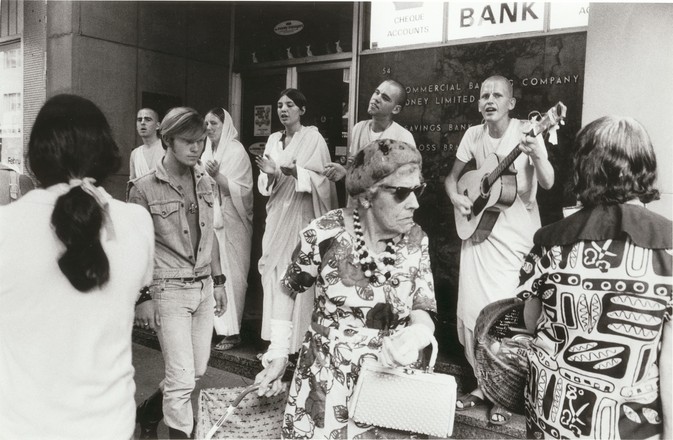
Hare Krishna, Kings Cross, 1970–71
Silver gelatin photoprint
PXE 858/22
A4280022
PXE 858/22
A4280022

Silver gelatin photoprint
PXE 858/22
A4280022
"These Kings Cross photographs project a sense of change and reflect what was happening in the broader Australian community at the time, although change, like everything else, always seemed more extreme in Kings Cross. This is exemplified in Hare Krishna, Kings Cross, where Ellis shows an elderly woman, formally decked out with hat and handbag, heading off to the shops, pulling her shopping jeep past a bare-chested young man and a chorus of Krishna devotees. Here, the generation gap seems to be a gulf. Such a juxtaposition of characters was an everyday occurence in Kings Cross at the time."
Susan van Wyk No standing only dancing - Photographs by Rennie Ellis 2009 pg 20
Hare Krishna are members of the International Society for Krishna Consciousness. Devotees lead a highly disciplined life as strict vegetarians, abstaining from drugs, alcohol, gambling and illicit sex, while worshipping Krishna, their supreme God, through prolonged chanting. They are recognisable by their saffron robes and shaved heads
Hare Krishna started in India in the fifteenth century, founded by Chaitanya Mahaprabhu. He showed a particular devotion to Krishna, one of the many gods of Hinduism, asserting that he was the chief god.
Hare Krishna arrived in the West in the 1960s and became popular among many young people during the seventies and eighties. Temples and farming communities soon sprang up around the world. In Australia Hare Krishna communities were centred around the North Coast of NSW. The popularity of Hare Krishna has declined in recent years.